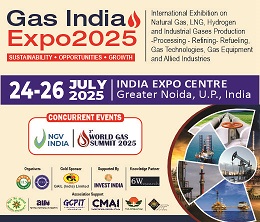Global Inlet Manifold Market (2025-2031) | Size, Forecast, Value, Analysis, Share, Companies, Growth, Trends, Revenue, Industry & Outlook
Market Forecast by Vehicle Type (Heavy Commercial Vehicle, Light Commercial Vehicle and Passenger Car), by Materials (composites, plastic, aluminum and others), By Manufacturing Process (injection-mould AIM and casting-based AIM), By Manifold Type (standard AIM and variable AIM), By Regions (North America, Latin America, Middle East, Asia Pacific and Africa) and Competitive Landscape
| Product Code: ETC054630 | Publication Date: Apr 2021 | Updated Date: May 2025 | Product Type: Report | |
| Publisher: 6Wresearch | No. of Pages: 300 | No. of Figures: 90 | No. of Tables: 30 | |
Global Inlet Manifold Market Size & Growth Rate
As per 6Wresearch, the Global Inlet Manifold Market size was valued at approximately USD 9.3 billion and is projected to reach USD 14.1 billion by 2031, growing at a CAGR of 5.8% from 2025 to 2031, driven by rising automotive production, engine performance demands, and emission control regulations.
| Report Name | Global Inlet Manifold Market |
| Report Category / Coverage | Global |
| Forecast Period | 2025-2031 |
| CAGR | 5.8% |
| Market Size | USD 14.1 billion by 2031 |
| Growing Sector | Passenger Vehicle and Commercial Vehicle Categories |
Topics Covered in the Global Inlet Manifold Market Report
The Global Inlet Manifold Market report thoroughly covers the market By Vehicle Type, By Materials, By Manufacturing Process, By Manifold Type, and By Regions. The market report provides an unbiased and detailed analysis of the ongoing market trends, opportunities/high growth areas, and market drivers which would help the stakeholders to devise and align their market strategies according to the current and future market dynamics.
Global Inlet Manifold Market Synopsis
The Global Inlet Manifold Market is an important subset in the automotive and industrial market that manufactures inlet manifolds for both light and heavy-duty engines, which enhances performance and efficiency. Inlet manifolds (intake manifolds) evenly distribute the engine's air-fuel mixture to the engine's cylinders, while improving harmonic combustion and engine efficiency. This market is clouded with uncertainties because automotive technology is continuously evolving, there is demand for greater fuel-efficient vehicles, light-weight materials are being developed for manufacturing, and the development of electric, hybrid, and similar vehicles drives research and insight in the Global Inlet Manifold Market.
Global Inlet Manifold Market is expected to grow at a significant CAGR of 5.8% during the forecast period 2025-2031. Increased efforts toward using less fuel and controlling emissions are leading to the expansion of the Global Inlet Manifold Market. Many governments are introducing strict environmental policies, so manufacturers are inventing advanced manifold solutions and systems. In addition, more vehicles today have turbochargers or smaller powertrains, so demand for powerful inlet manifolds is rising. There has been a rise in opportunities for the development of lightweight and efficient products designed for these types of vehicles.
Still, there are numerous issues that the market must confront. Motivated by transition to electric vehicles, there is a decrease in the use of inlet manifolds linked to internal combustion engines. Moreover, because raw material prices tend to move and it is tough to design effective light parts, manufacturers encounter difficulties. Regardless of these issues, research and development projects meant to improve materials and production are forecast to drive growth in the market.
Global Inlet Manifold Market Trends
The inlet manifold industry is witnessing rapid advancements tied to broader trends in the automotive sector. A key trend is the adoption of lightweight materials such as composites and plastics in manufacturing manifolds, which supports fuel-efficiency initiatives and compliance with emission standards. Automated and precision-driven manufacturing processes, such as injection moulding and CNC machining, are also transforming manifold production, offering enhanced accuracy and cost-effectiveness.
Another emerging trend is the integration of variable intake manifold designs into hybrid and performance-oriented engines to maximize efficiency and power delivery across different driving conditions. Additionally, automakers are creating eco-conscious designs by using recyclable materials and reducing fuel consumption. New manifold technologies compatible with EV engines are opening avenues for diversification, offering key players a competitive edge.
Investment Opportunities in the Global Inlet Manifold Market
The Global Inlet Manifold Market presents lucrative investment opportunities, particularly in the development of next-generation manifold technologies for hybrid and electric vehicles. With rising demand for innovative intake systems capable of optimizing energy efficiency, manufacturers investing in R&D for variable manifold systems and lightweight composite materials are poised for significant returns.
The growing production of passenger and light commercial vehicles globally also draws attention towards automation and advanced manufacturing facilities. Investment in eco-friendly manufacturing practices and sustainable materials such as bio-composites is rising, revealing additional prospects. Similarly, infrastructure advancements in emerging economies, especially in the Asia-Pacific region, provide ample scope for global players to expand their footprint and tap into the fast-growing inland manifold market.
Leading Players in the Global Inlet Manifold Market
Key players in the Global Inlet Manifold Market include MANN+HUMMEL Group, Mahle GmbH, Magneti Marelli, Trelleborg AB, and AISIN Corporation. These companies have consistently focused on developing advanced air intake manifold systems using lightweight and sustainable materials. For instance, MANN+HUMMEL specializes in composite manifolds for reduced weight, while Mahle GmbH leads in optimizing variable intake manifolds for enhanced engine performance. Growing investments in R&D by these firms further contribute to shaping the competitive landscape.
Government Regulations Introduced in the Global Inlet Manifold Market
Policies on vehicle emissions and fuel economy standards have a direct impact on the Global Inlet Manifold Market. For example, in Europe, stringent regulations under the Euro 6 Standard have compelled manufacturers to adopt advanced intake manifold designs that optimize fuel efficiency and emissions. Similarly, the U.S. Corporate Average Fuel Economy (CAFE) standards mandate manufacturers to produce fuel-efficient vehicles, driving innovations in lightweight manifold systems. Additionally, many governments offer subsidies or tax incentives for hybrid and electric vehicle production, encouraging manufacturers to invest in EV-compatible manifold technologies.
Future Insights of the Global Inlet Manifold Market
The Inlet manifold industry is predicted to evolve significantly in the years ahead, driven by advancements in material science and green automotive technologies. With the growing electrification of vehicles, manufacturers are expected to invest heavily in designing manifolds compatible with hybrid and alternative fuel engines. Innovations in manufacturing processes, such as next-generation moulding technologies, will likely improve production scalability while adhering to stringent environmental standards.
Meanwhile, the demand for lightweight vehicles and increased adoption of variable intake manifolds for optimized performance will continue to drive market growth. Key players focusing on eco-friendly solutions, such as recyclable manifolds and sustainable manufacturing, are likely to dominate the market, ensuring alignment with future sustainability goals.
Market Segmentation Analysis
The report offers a comprehensive study of the subsequent market segments and their leading categories.
Passenger car to Dominate the Market- By Vehicle Types
According to Ayushi, Senior Research Analyst, 6Wresearch, Among the vehicle types, the passenger car segment dominates the Global Inlet Manifold Market share. This is primarily due to the high production and sales volume of passenger cars worldwide, driven by increasing urbanization and rising consumer demand for personal vehicles. Additionally, the growing preference for fuel-efficient and lightweight vehicles contributes to the adoption of advanced inlet manifolds in this segment.
Plastic segment to Dominate the Market- By Materials
The plastic segment has emerged as the dominant material type in the Global Inlet Manifold Market. Plastic manifolds are favoured for their lightweight properties, ease of manufacturing, and cost-effectiveness. Furthermore, their ability to withstand high temperatures and resist corrosion makes them a preferred choice for modern engines, especially in fuel-efficient vehicles.
Injection-moulded Advanced Intake Manifolds (AIM) to Dominate the Market- By Manufacturing Process
Injection-moulded Advanced Intake Manifolds (AIM) hold a significant share in the Global Inlet Manifold Market. This manufacturing process is widely adopted due to its ability to produce complex shapes with precision while minimizing material waste. Its efficiency in large-scale production and compatibility with lightweight composite materials has led to its dominance.
Variable AIM to Dominate the Market- By Manifold Type
Variable intake manifolds (Variable AIM) dominate the market due to their ability to enhance engine performance across different speed ranges. By optimizing airflow based on engine speed, variable AIM systems contribute to improved fuel efficiency and reduced emissions, making them highly desirable in modern vehicles.
Asia Pacific to Dominate the Market- By Regions
The Asia Pacific region leads the Global Inlet Manifold Market, owing to the robust growth of the automotive industry in nations such as China, India, and Japan. Factors such as increasing vehicle production, rising disposable incomes, and the presence of a strong manufacturing base contribute to the dominance of this region in the market.
Key Attractiveness of the Report
- 10 Years of Market Numbers.
- Historical Data Starting from 2021 to 2024
- Base Year: 2024
- Forecast Data until 2031
- Key Performance Indicators Impacting the Market
- Major Upcoming Developments and Projects
Key Highlights of the Report:
- Global Inlet Manifold Market Outlook
- Global Inlet Manifold Market Overview
- Global Inlet Manifold Market Forecast
- Historical Data for the period 2021-2031 and Market Forecast of Global Inlet Manifold Market Revenues until 2031
- Historical Data for the period 2021-2031 and Market Forecast of the market until 2031, By Vehicle Types
- Historical Data for the period 2021-2031 and Market Forecast of the market until 2031, By Manufacturing Process
- Historical Data for the period 2021-2031 and Market Forecast of the market until 2031, By Material
- Historical Data for the period 2021-2031 and Market Forecast of the market until 2031, By Manifold Type
- Historical Data for the period 2021-2031 and Market Forecast of the market until 2031, By Regions
- Historical Data for the period 2021-2031 and Market Forecast until 2031 for Latin America Global Inlet Manifold Market
- Historical Data for the period 2021-2031 and Market Forecast until 2031 for North America Global Inlet Manifold Market
- Historical Data for the period 2021-2031 and Market Forecast until 2031 for Middle East Global Inlet Manifold Market
- Historical Data for the period 2021-2031 and Market Forecast until 2031 for Asia Pacific Global Inlet Manifold Market
- Historical Data for the period 2021-2031 and Market Forecast until 2031 for Africa Global Inlet Manifold Market
- Historical Data for the period 2021-2031 and Market Forecast until 2031 for Europe Global Inlet Manifold Market
- Global Inlet Manifold Market Trends
- Industry Life Cycle
- Porter’s Five Force Analysis
- Market Opportunity Assessment
- Global Inlet Manifold Market Share, By Players
- Competitive Benchmarking
Markets Covered
- The report offers a comprehensive study of the following market segments:
By Vehicle Type:
- Heavy Commercial Vehicle
- Light Commercial Vehicle
- Passenger Car
By Materials:
- Composites
- Plastic
- Aluminium
- Others
By Manufacturing Process:
- Injection-moulded AIM
- Casting-based AIM
By Manifold Type:
- Standard AIM
- Variable AIM
By Regions:
- North America
- Latin America
- Middle East
- Asia-Pacific
- Africa
Global Inlet Manifold Market | (2025-2031) : FAQs
| 1. Executive Summary |
| 2. Introduction |
| 2.1. Key Highlights of the Report |
| 2.2. Report Description |
| 2.3. Market Scope & Segmentation |
| 2.4. Research Methodology |
| 2.5. Assumptions |
| 3. Global Inlet Manifold Market Overview |
| 3.1. Global Country Macro Economic Indicators |
| 3.2. Global Inlet Manifold Market Revenue, 2021 & 2031F |
| 3.3. Global Inlet Manifold Market - Industry Life Cycle |
| 3.4. Global Inlet Manifold Market - Porter's Five Forces |
| 3.5. Global Inlet Manifold Market Revenue Share, By Vehicle Type, 2021 & 2031F |
| 3.6. Global Inlet Manifold Market Revenue Share, By Material, 2021 & 2031F |
| 3.6. Global Inlet Manifold Market Revenue Share, By Manifold Type, 2021 - 2031F |
| 3.6. Global Inlet Manifold Market Revenue Share, By Manufacturing Process, 2021 - 2031F |
| 3.6. Global Inlet Manifold Market Revenue Share, By Regions, 2021 & 2031F |
| 4. Global Inlet Manifold Market Dynamics |
| 4.1. Impact Analysis |
| 4.2. Market Drivers |
| 4.3. Market Restraints |
| 5. Global Inlet Manifold Market Trends |
| 6. Global Inlet Manifold Market, By Vehicle Type |
| 6.1. Global Inlet Manifold Market, By Vehicle Type |
| 6.1.1. Overview and Analysis |
| 6.1.2. Global Inlet Manifold Market Revenue, By Passenger Car, 2021 - 2031F |
| 6.1.3. Global Inlet Manifold Market Revenue, By Light Commerical Vehicle, 2021 - 2031F |
| 6.1.4. Global Inlet Manifold Market Revenue, By Heavy Commercial Vehicle, 2021 - 2031F |
| 7. Global Inlet Manifold Market, By Material |
| 7.1. Global Inlet Manifold Market, By Material |
| 7.1.1. Overview and Analysis |
| 7.1.2. Global Inlet Manifold Market Revenue, By Composites, 2021 - 2031F |
| 7.1.3. Global Inlet Manifold Market Revenue, By Plastic, 2021 - 2031F |
| 7.1.4. Global Inlet Manifold Market Revenue, By Aluminium, 2021 - 2031F |
| 7.1.5. Global Inlet Manifold Market Revenue, By Others, 2021 - 2031F |
| 8. Global Inlet Manifold Market, By Manufacturing Process |
| 8.1. Global Inlet Manifold Market, By Manufacturing Process |
| 8.1.1. Overview and Analysis |
| 8.1.2. Global Inlet Manifold Market Revenue, By Injection-moulded AIM, 2021 - 2031F |
| 8.1.3. Global Inlet Manifold Market Revenue, By Casting-based AIM, 2021 - 2031F |
| 9. Global Inlet Manifold Market, By Manifold Type |
| 9.1. Global Inlet Manifold Market, By Manifold Type |
| 9.1.1. Overview and Analysis |
| 9.1.2. Global Inlet Manifold Market Revenue, By Variable AIM, 2021 - 2031F |
| 9.1.3. Global Inlet Manifold Market Revenue, By Standard AIM, 2021 - 2031F |
| 9.1.4. Global Inlet Manifold Market Revenue, By Continous Inlet Manifold, 2021 - 2031F |
| 10. Europe Inlet Manifold Market |
| 10.1. Europe Inlet Manifold Market, By Vehicle Type |
| 10.2. Europe Inlet Manifold Market, By Material |
| 10.3. Europe Inlet Manifold Market, By Manufacturing Process |
| 10.4. Europe Inlet Manifold Market, By Manifold Type |
| 10.5. Europe Inlet Manifold Market, By Countries |
| 11. Asia Pacific Inlet Manifold Market |
| 11.1. Asia Pacific Inlet Manifold Market, By Vehicle Type |
| 11.2. Asia Pacific Inlet Manifold Market, By Material |
| 11.3. Asia Pacific Inlet Manifold Market, By Manufacturing Process |
| 11.4. Asia Pacific Inlet Manifold Market, By Manifold Type |
| 11.5. Asia Pacific Inlet Manifold Market, By Countries |
| 12. North America Inlet Manifold Market |
| 12.1. North America Inlet Manifold Market, By Vehicle Type |
| 12.2. North America Inlet Manifold Market, By Material |
| 12.3. North America Inlet Manifold Market, By Manufacturing Process |
| 12.4. North America Inlet Manifold Market, By Manifold Type |
| 12.5. North America Inlet Manifold Market, By Countries |
| 13. Latin America Inlet Manifold Market |
| 13.1. Latin America Inlet Manifold Market, By Vehicle Type |
| 13.2. Latin America Inlet Manifold Market, By Material |
| 13.3. Latin America Inlet Manifold Market, By Manufacturing Process |
| 13.4. Latin America Inlet Manifold Market, By Manifold Type |
| 13.5. Latin America Inlet Manifold Market, By Countries |
| 14. Middle East Inlet Manifold Market |
| 14.1. Middle East Inlet Manifold Market, By Vehicle Type |
| 14.2. Middle East Inlet Manifold Market, By Material |
| 14.3. Middle East Inlet Manifold Market, By Manufacturing Process |
| 14.4. Middle East Inlet Manifold Market, By Manifold Type |
| 14.5. Middle East Inlet Manifold Market, By Countries |
| 15. Africa Inlet Manifold Market |
| 15.1. Africa Inlet Manifold Market, By Vehicle Type |
| 15.2. Africa Inlet Manifold Market, By Material |
| 15.3. Africa Inlet Manifold Market, By Manufacturing Process |
| 15.4. Africa Inlet Manifold Market, By Manifold Type |
| 15.5. Africa Inlet Manifold Market, By Countries |
| 16. Global Inlet Manifold Market Import-Export Trade Statistics |
| 16.1. Global Inlet Manifold Market Export to Major Countries |
| 16.2. Global Inlet Manifold Market Imports from Major Countries |
| 17. Global Inlet Manifold Market Key Performance Indicators |
| 18. Global Inlet Manifold Market - Opportunity Assessment |
| 18.1. Global Inlet Manifold Market Opportunity Assessment, By Vehicle Type, 2021 & 2031F |
| 18.2. Global Inlet Manifold Market Opportunity Assessment, By Material, 2021 & 2031F |
| 19. Global Inlet Manifold Market - Competitive Landscape |
| 19.1. Global Inlet Manifold Market Revenue Share, By Companies, 2024F |
| 19.2. Global Inlet Manifold Market Competitive Benchmarking, By Operating and Technical Parameters |
| 20. Company Profiles |
| 21. Recommendations |
| 22. Disclaimer |
- Single User License$ 4,560
- Department License$ 5,055
- Site License$ 5,595
- Global License$ 6,000
Search
Related Reports
- ASEAN Bearings Market (2025-2031) | Strategy, Consumer Insights, Analysis, Investment Trends, Opportunities, Growth, Size, Share, Industry, Revenue, Segments, Value, Segmentation, Supply, Forecast, Restraints, Outlook, Competition, Drivers, Trends, Demand, Pricing Analysis, Competitive, Strategic Insights, Companies, Challenges
- Europe Flooring Market (2025-2031) | Outlook, Share, Industry, Trends, Forecast, Companies, Revenue, Size, Analysis, Growth & Value
- Saudi Arabia Manlift Market (2025-2031) | Outlook, Size, Growth, Trends, Companies, Industry, Revenue, Value, Share, Forecast & Analysis
- Uganda Excavator, Crane, and Wheel Loaders Market (2025-2031) | Strategy, Consumer Insights, Analysis, Investment Trends, Opportunities, Growth, Size, Share, Industry, Revenue, Segments, Value, Segmentation, Supply, Forecast, Restraints, Outlook, Competition, Drivers, Trends, Demand, Pricing Analysis, Competitive, Strategic Insights, Companies, Challenges
- Rwanda Excavator, Crane, and Wheel Loaders Market (2025-2031) | Strategy, Consumer Insights, Analysis, Investment Trends, Opportunities, Growth, Size, Share, Industry, Revenue, Segments, Value, Segmentation, Supply, Forecast, Restraints, Outlook, Competition, Drivers, Trends, Demand, Pricing Analysis, Competitive, Strategic Insights, Companies, Challenges
- Kenya Excavator, Crane, and Wheel Loaders Market (2025-2031) | Strategy, Consumer Insights, Analysis, Investment Trends, Opportunities, Growth, Size, Share, Industry, Revenue, Segments, Value, Segmentation, Supply, Forecast, Restraints, Outlook, Competition, Drivers, Trends, Demand, Pricing Analysis, Competitive, Strategic Insights, Companies, Challenges
- Angola Excavator, Crane, and Wheel Loaders Market (2025-2031) | Strategy, Consumer Insights, Analysis, Investment Trends, Opportunities, Growth, Size, Share, Industry, Revenue, Segments, Value, Segmentation, Supply, Forecast, Restraints, Outlook, Competition, Drivers, Trends, Demand, Pricing Analysis, Competitive, Strategic Insights, Companies, Challenges
- Israel Intelligent Transport System Market (2025-2031) | Strategy, Consumer Insights, Analysis, Investment Trends, Opportunities, Growth, Size, Share, Industry, Revenue, Segments, Value, Segmentation, Supply, Forecast, Restraints, Outlook, Competition, Drivers, Trends, Demand, Pricing Analysis, Competitive, Strategic Insights, Companies, Challenges
- Uganda Precast and Aggregate Market (2025-2031) | Strategy, Consumer Insights, Analysis, Investment Trends, Opportunities, Growth, Size, Share, Industry, Revenue, Segments, Value, Segmentation, Supply, Forecast, Restraints, Outlook, Competition, Drivers, Trends, Demand, Pricing Analysis, Competitive, Strategic Insights, Companies, Challenges
- Australia IT Asset Disposal Market (2025-2031) | Strategy, Consumer Insights, Analysis, Investment Trends, Opportunities, Growth, Size, Share, Industry, Revenue, Segments, Value, Segmentation, Supply, Forecast, Restraints, Outlook, Competition, Drivers, Trends, Demand, Pricing Analysis, Competitive, Strategic Insights, Companies, Challenges
Industry Events and Analyst Meet
Our Clients
Whitepaper
- Middle East & Africa Commercial Security Market Click here to view more.
- Middle East & Africa Fire Safety Systems & Equipment Market Click here to view more.
- GCC Drone Market Click here to view more.
- Middle East Lighting Fixture Market Click here to view more.
- GCC Physical & Perimeter Security Market Click here to view more.
6WResearch In News
- Doha a strategic location for EV manufacturing hub: IPA Qatar
- Demand for luxury TVs surging in the GCC, says Samsung
- Empowering Growth: The Thriving Journey of Bangladesh’s Cable Industry
- Demand for luxury TVs surging in the GCC, says Samsung
- Video call with a traditional healer? Once unthinkable, it’s now common in South Africa
- Intelligent Buildings To Smooth GCC’s Path To Net Zero













